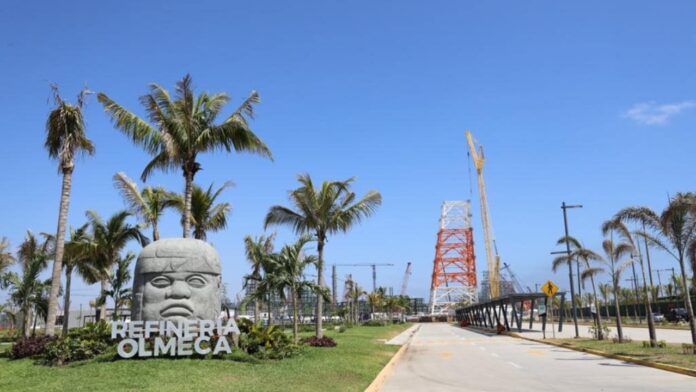The Center for Economic Studies of the Private Sector (CEESP) assures that the economic growth registered by Tabasco and Chiapas is significant to encourage and promote local industry, but insufficient to give greater dynamism to the Mexican economy.
In recent years, Tabasco and Chiapas have stood out among the states with the highest growth in gross domestic product (GDP) and industrial production, according to the organization led by Carlos Hurtado López.
Tabasco lives the dynamism of the activity and the flow of public spending in oil production and construction related to the Dos Bocas refinery, says the advisory body on economic matters of the Business Coordinating Council (CCE).
In Chiapas, retail trade has gained a strong boost, possibly related to the significant inflow of remittances from abroad and tourist visits after the pandemic, says the center for economic analysis and research.
The growth in construction has also had an important influence on the economic recovery of Chiapas, adds the CEESP.
“Despite the significant advances in Tabasco and Chiapas, their impact at the national level is small if one considers that together they represent only 4.3% of the Mexican economy and less when compared to the most representative entities: CDMX, with 17.6%; State of Mexico, with 9.1%; Nuevo León, with 7.7%, and Jalisco, with 6.9%”, he details.
“It is urgent that the conditions be created to promote the flourishing of productive investment in the country, through more certainty, the rule of law and policies that facilitate it,” says the CEESP.
Additionally, to integrate the economy and the added value of the south-southeast states, such as Chiapas, Tabasco, Oaxaca, Campeche, Quintana Roo and Yucatán, to the investment trends coming from relocation or nearshoring, better conditions of infrastructure, logistics and political certainty, among others, adds the think tank.
Concern about industrial stagnation
After three months on the rise, industrial production did not grow during the first month of the year, although it was 2.5% higher than the same month in 2022 -the lowest annual growth in the last 10 months-, recalls the Center.
According to the INEGI report, industrial production had a slight decrease (-0.01%) compared to December, when the timely estimate of the Institute anticipates an advance of 0.5%.
“This behavior was entirely due to the 1% decrease in construction, which was due to the 8.6% monthly drop in the construction of civil engineering works, mainly infrastructure,” he adds.
He details that the observation is only for a month, but there is concern about the possibility of a new stagnation of investment.
“Even though its indicator grew 6.0% throughout 2022, it still has not managed to recover what it has lost so far in the six-year term and it is still 8.3% lower than in 2018.”
“It is possible that the drop in construction in January is related to a contraction in public investment. According to the information on public finances, spending on physical investment in the public sector last January was 13.6% lower in real terms than a year earlier”, highlights CEESP.
Source: Forbes




